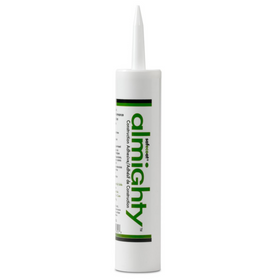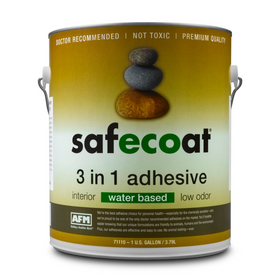
Board and Batten Siding: What You Need to Know
Last Updated: Feb 11, 2025Farmers and ranchers in the United States make up only 1.3 percent of the total employed population. Even though most of us no longer make a living from the land, aspects of our rural heritage strongly influence our choices. The growth in popularity of "barndominiums" or barn homes shows that many homeowners are interested in a home style reminiscent of the farm life that characterized previous generations.
One key feature of barn-style homes is the distinctive board and batten siding. Used for centuries on barns, sheds, and other utility buildings on the homestead, board and batten siding offer a singular, unique style. This increasingly popular exterior cladding option can provide a few vital sustainability benefits. Suppose you are looking for a practical, sustainable, and aesthetically pleasing siding for your home below. In that case, we explain the benefits of opting for board and batten siding.
Table of Contents
- What Is Board and Batten Siding?
- What Does Batten Board Look Like?
- What Is the Best Wood to Use for Board and Batten Siding?
- How Far Apart Should Board and Batten Siding Be?
- How to Seal Board and Batten Siding?
- How Long Does Board and Batten Siding Last?
- How to Install Board and Batten Siding?
- What is Reverse Board and Batten Siding?
- How Much Does Board And Batten Siding Cost?
- Where to Buy Board and Batten Wood Siding?
What Is Board and Batten Siding?
Old-style barns were generally constructed from wooden planks that served as both the interior and exterior walls. This type of construction was quick, efficient, and could usually be built from locally sourced wood. With no insulation, however, these barns were cold during the winter months. To reduce the number of cold drafts entering the barn, farmers would often nail thin wood slats in the joints between two wooden planks. While morning milking and other barn chores were still a cold affair in the winter months, these thin slats diminished the barn's amount of air leakage.
Over time, the distinctive exterior siding of barns became known as board and batten. Home contractors would alternate wide boards with narrower wooden strips. The wider boards are between 12 and 14 inches thick, with the thinner strips of 1-3 inches placed where the two boards meet. Whereas most barns used to be built with vertical board and batten siding, modern-day home contractors use this exterior siding in vertical and horizontal presentations. Board and batten siding can even be used on home interiors for a rustic, cabin-like feel.
Though board and batten siding has traditionally been used for wooden exteriors, many home contractors today use this design for other types of siding alternatives. Vinyl siding, fiber cement siding, engineered wood siding, aluminum siding, and other alternative cladding options have incorporated board and batten aesthetic.
What Does Batten Board Look Like?
For most people, the first thing that catches the eye with board and batten siding is how the home façade incorporates differing elevations or protrusions. This level change gives the traditional "barn look." The layered effect can even improve your home's energy efficiency and thermal performance by reducing air leaks. A tight building envelope is one of the guiding principles of passive home construction, widely recognized as a leading energy-efficient building method.
Another aesthetic benefit of board and batten siding is that it can be used for many different home styles. While this exterior cladding option is most often associated with barn-style homes, it can be incorporated into cabins and even more modernist constructions. Check out the following examples to see the diversity of styles that board and batten siding can offer:
- The traditional barn-style home with board and batten siding.
- Board and batten siding for a rustic cabin or homestead-style home.
- Board and batten siding on a more modernist style home.
- Hybrid board and batten with a brick exterior siding.

What Is the Best Wood to Use for Board and Batten Siding?
Choosing wood siding for the exterior of your home comes with several benefits. Firstly, wood is one of the few "carbon-neutral" building materials available. The carbon dioxide emitted during the manufacturing, transporting, and building process was extracted from the atmosphere as the tree grew.
That carbon is sequestered in the wood for as long as it remains a part of your home. Some hardwood species can easily remain usable for centuries. By choosing sustainably harvested board and batten siding, homeowners can do their part to reduce their carbon footprint. Read more about the best wood certification and sustainable forestry programs here.
Some building professionals or contractors might advise against using wood exterior siding due to concerns about rotting, insect infestation, and warping due to moisture. While all of these issues can arise, proper maintenance, including regular sealing and painting, can avoid these issues. In addition, several "rot-resistant" species of trees are an excellent option for board and batten siding.
Cedar is one of the most common (and relatively affordable) exterior siding options built as board and batten. It is naturally resistant to insects such as termites, and when properly treated, it can last for several decades. Low-grade cedar siding might cost as little as $3 to $4 per square foot, while higher-grade options can cost upwards of $10 per square foot.
Other hardwood species such as Redwood, Hemlock, Locust, White Oak, and Cypress offer excellent durability and rot-resistance. However, this type of lumber can be harder to source. So, you should expect to pay a premium price. Engineered wood siding products can be combined with certain trims to give a board and batten layering effect. Engineered panels are generally less expensive, and they can be highly durable as well.

How Far Apart Should Board and Batten Siding Be?
For natural wood siding, the most commonly used type of lumber is a 1-inch by 10-inch board. If installed vertically with a 2-inch "batten," the result will be eight inches of reveal on the board interspersed with the 2-inch batten. However, if you find different lumber dimensions, feel free to experiment with spacing options. Many engineered wood siding products that incorporate the board and batten layered effect have significantly thinner spacing profiles.
How to Seal Board and Batten Siding?
As with all wood building products, properly sealing and staining the board and batten is essential for protecting the siding and prolonging its life. During installation, make sure to add a sealant to the entire board before installing the battens. Otherwise, the part of the board covered by the batten will be left unsealed and prone to moisture damage. Check out this Rise guide to healthy wood finishes for the most sustainable options for finishing your board and batten siding.

How Long Does Board and Batten Siding Last?
As mentioned above, the primary maintenance task associated with board and batten siding is properly sealing, staining, and painting the wooden boards. When sealed and stained or painted, wood siding can easily last 30 years or more, depending on the type of lumber used. Cypress, redwood, or other hardwood wood siding types can last a lifetime, while pine boards or engineered wood siding should last for at least 20 to 30 years.
To prolong your siding's life, make sure to fix any moisture damage as soon as you notice it. If warping occurs due to moisture or the "settling" of the home, caulking around window frames, door frames, and other joints will be necessary to maintain the building envelope's tightness.
Building Materials
Shop high-performance building materials that are vetted for benefits to your health, your pocketbook, and the planet.

AFM Safecoat Almighty Adhesive Case of 12
AFM Safecoat
In Stock

AFM Safecoat 3 in 1 Adhesive
AFM Safecoat
In Stock

Quickscrews Cabinet Install Screws
Quickscrews
In Stock

AutoSlide Automatic Sliding Door System
Autoslide
Out of Stock
2 Colors

Autoslide Smart Tag Pet Door Kit
Autoslide
Out of Stock
2 Colors

AutoSlide Elite iLock Smart Tag Pet Door System
Autoslide
Out of Stock
2 Colors

Quickscrews Pan Head Pocket Hole Screws
Quickscrews
In Stock

Autoslide Elite Smart Tag Pet Door Kit
Autoslide
Out of Stock
2 Colors

Autoslide Motion Activated Pet Door System
Autoslide
Out of Stock
2 Colors

Quickscrews Square Flat Head Wood and Particle Board Screws
Quickscrews
In Stock

How to Install Board and Batten Siding?
It is necessary for homeowners who are self-installing their board and batten siding to carefully calculate the wall's length. This way, you will be sure to have equally spaced boards. To do this, follow these steps:
- Find the number of spaces: Measure your wall's total length and divide that number by your desired spacing between each batten. That number will give you the total number of "spaces" you have on your wall.
- Find the number of battens: Add "one" to the total number of spaces, and you will have the calculation for the number of battens you need.
- Calculate the spacing between battens: Multiply the desired width of your batten planks by the number of battens and subtract that number from the wall's total length. Divide that number by the number of spaces calculated earlier. This total will give you the precise spacing you should use between each batten.
Consider the following example to guide you through the steps above.
- The number of spaces: A 240-inch length wall that wants 10-inch spacing would have 24 spaces.
- The number of battens: Those 24 spaces + 1 would give you 25 total batten pieces.
- If you wanted a 3-inch batten width x the 25 total batten pieces, you would end up with 75 inches of total batten width. The 240-inch wall-length minus the 75 inches of total batten width would leave you with 165 inches of wall length minus the batten space. Finally, divide the 165 inches of wall length minus the battens by the 24 spaces calculated initially. So, you would have a spacing of 6.9 inches between each batten.
You can do several of these calculations to determine the best spacing for your board and batten siding.

What is Reverse Board and Batten Siding?
Reverse board and batten siding are achieved by placing the board in front of the batten instead of behind. This configuration makes it appear that the battens are wider than the spacing between them. Reverse board and batten produce a modern effect that we love.

How Much Does Board And Batten Siding Cost?
The cost of board and batten siding will depend entirely on the type of wood you choose. Homeowners can expect to pay anywhere between $0.75 and $10 per square foot for materials. Cedar siding costs around $3 per square foot, while cypress wood can cost over $20 per square foot. Engineered wood products are usually less expensive than natural wood, costing between $2 and $5.50 per square foot. Depending on your region, you should expect to pay between $1.50 and $2.50 per square foot for installation costs.
Where to Buy Board and Batten Wood Siding?
Board and batten siding can be found at virtually every major hardware store. Forest Products Supply Co. is one retailer with locations across various Midwest states that offer different board and batten products. Lowe's has a good selection of high-quality lumber, including cypress wood that can be used for board and batten siding.

Board and batten siding is an excellent alternative for homeowners who want a unique aesthetic touch that improves their building envelope's tightness for better energy efficiency.
Tobias Roberts
Tobias runs an agroecology farm and a natural building collective in the mountains of El Salvador. He specializes in earthen construction methods and uses permaculture design methods to integrate structures into the sustainability of the landscape.


